|
|
Post by galacticgirrrl on May 2, 2023 22:32:54 GMT
May 2, 1887Celluloid-Film Patent Ignites Long Legal BattleThe Rev. Hannibal Goodwin files a patent application for camera film on celluloid rolls. He beats the Eastman Kodak company by two years and sets off a 27-year legal battle.
 Hannibal Williston Goodwin (April 30, 1822 – December 31, 1900) Hannibal Williston Goodwin (April 30, 1822 – December 31, 1900)Goodwin was an Episcopal rector in Newark, New Jersey. He liked projecting lantern-slides of Bible stories to his Sunday school classes and wanted to try making his own. He set up a chemistry lab in the attic of the Plum house rectory and sawed a five foot hole in the roof for better sunlight. 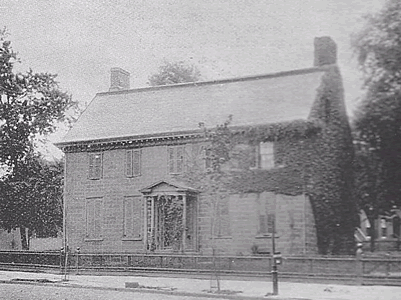 Plume House rectory Plume House rectory
After two years of tinkering in his attic laboratory finally produced a flexible film from nitrocellulose,  In 1900, Goodwin set up the Goodwin Film and Camera Company, but before film production had started he was involved in a street accident near a construction site and died. Goodwin's patent was sold to Ansco who successfully sued Eastman Kodak for infringement of the patent and was awarded $5 million (over $120 million in 2020) on March 10, 1914.  Except for the substitution of acetate for celluloid, Goodwin's original technology dominated photography for a century before the advent of digital cameras. The Beginning of 2D Animation by H.W.Goodwin animaders.com/the-beginning-of-2d-animation-by-h-w-goodwin/May 2, 1887: Celluloid-Film Patent Ignites Long Legal Battle www.wired.com/2011/05/0502celuloid-photographic-film/
|
|
|
|
Post by galacticgirrrl on May 3, 2023 1:43:40 GMT
May 2, 1939
The National Film Board of Canada is founded
The creation of NFB is a central event in the history of Canadian cinema. It has pioneered developments in social documentary, animation, documentary drama and direct cinema. It is a continuing initiator of new technology.  Buster Keaton in The Railrodder (1965) Buster Keaton in The Railrodder (1965)The new agency had a mandate to “make and distribute films designed to help Canadians in all parts of Canada to understand the ways of living and the problems of Canadians in other parts.” 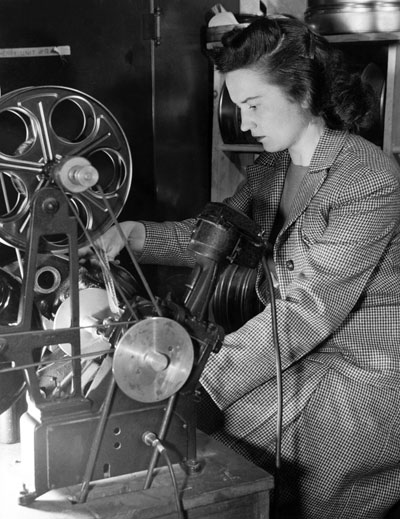 Gudrun Bjerring Parker Gudrun Bjerring ParkerThe NFB has been a leader in films by women, with the world's first publicly funded women's film's studio.  Ontario Place Imax Theatre Ontario Place Imax TheatreNFB documentarians played a key role in the development of the IMAX film format, following the NFB multi-screen experience In the Labyrinth, created for Expo 67 in Montreal.  The NFB has produced over 13,000 productions since its inception, which have won over 5,000 awards. Buster Keaton rides the rails in Canada blog.nfb.ca/blog/2009/12/11/buster-keaton-rides-the-rails-in-canada/The Founding of the NFB blog.nfb.ca/blog/2009/08/12/the-founding-of-the-nfb/The NFB's mandate over the years www.canada.ca/en/national-film-board/corporate/archives-and-history/history/mandate-timeline.html
|
|
|
|
Post by galacticgirrrl on May 4, 2023 1:28:16 GMT
That NFB post took a lot out of me. I had to stall with two other posts before biting the bullet.
To distill my reticence down to the starkest of terms....
Name your favorite classic Canadian film - romance, noir, western, war - any will do.
You can probably name one for France, Italy, Germany, England, Russia - maybe even Spain, Australia.
|
|
|
|
Post by galacticgirrrl on May 4, 2023 2:00:35 GMT
May 3, 1948U.S. Supreme Court decides Paramount antitrust case
The decision is responsible for putting an end to the old Hollywood studio system.  This landmark case decided the fate of film studios owning their own theatres and holding exclusivity rights on which theatres would show their movies.   Vinson Supreme Court Official photo, 1949 Vinson Supreme Court Official photo, 1949 As the largest studio, Paramount Pictures was the primary defendant, but all of the other Big Five (Metro-Goldwyn-Mayer, Warner Bros., 20th Century Fox, and RKO Pictures) and Little Three (Universal Pictures, Columbia Pictures, and United Artists) were named.  Hollywood's leaders visit the White House in 1938. From left to right: Barney Balaban (Paramount), George Schaefer (Paramount), Harry Cohn (Columbia), Sideny Kent (Twentieth Century-Fox), Nicholas Schenck (Leow's-MGM), Nate Blumberg (Universal), Will Hays (MPPDA President), Albert Warner (Warner Bros.), Leo Spitz (RKO). Hollywood's leaders visit the White House in 1938. From left to right: Barney Balaban (Paramount), George Schaefer (Paramount), Harry Cohn (Columbia), Sideny Kent (Twentieth Century-Fox), Nicholas Schenck (Leow's-MGM), Nate Blumberg (Universal), Will Hays (MPPDA President), Albert Warner (Warner Bros.), Leo Spitz (RKO).
The legal issues originated in the silent era, when the Federal Trade Commission began investigating film companies for potential violations under the Sherman Antitrust Act of 1890. 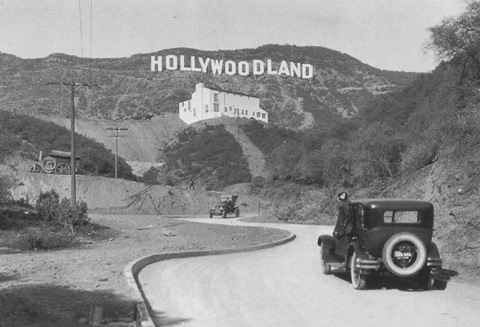 Robert L. Wright, who spearheaded the case for the DOJ, said the purpose of the lawsuit was to assure a level playing field, where the success of a studio would depend “upon the merits of its product” rather than “because it holds a monopoly.” The government’s case accused the studios of violating the Sherman Antitrust Act in their total control over movie distribution and exhibition. Consequences of the decision include: - An increase in independent producers and studios free of major studio interference.
- An increase in the number of independent movie theaters throughout the 1950s, 60s and 70s.
- Allowing creative freedom for both behind-the-camera personnel and actors.
- Weakening of the Hays Code with a rise in "art house" theaters showing foreign or independent films made outside of the Code's jurisdiction.
Legal scholars and historians debate whether United States v. Paramount successfully ended the monopoly on the movie industry.
The end of the Paramount Decree - August 7, 2020As part of a 2019 review of its ongoing decrees, the Department of Justice issued a two-year sunsetting notice for the Paramount Decree in August 2020, believing the antitrust restriction was no longer necessary as the old model could never be recreated in contemporary settings. Who Needs Theaters?
District Court Judge Analisa Torres found that because of streaming there was little worry about competition in the movie-theater sector. The move was opposed by independent movie theater owners, including the Independent Cinema Alliance, and independent filmmakers. ![]()  Why movie theaters are in trouble after DOJ nixes 70-year-old case Why movie theaters are in trouble after DOJ nixes 70-year-old case
The end of Paramount could eventually make your local theater a Disneyplex
arstechnica.com/tech-policy/2020/08/why-movie-theaters-are-in-trouble-after-doj-nixes-70-year-old-case/How Hollywood Has Kept One Step Ahead of Regulators
Long before the M&A wave initiated by the streaming wars, the major studios aimed to corner the market for production and distribution. The (now-scrapped) Paramount Decrees tried to rein that in — but far-sighted executives saw television as a workaround.
www.hollywoodreporter.com/business/business-news/hollywood-mergers-review-regulators-1235088168/
|
|
|
|
Post by galacticgirrrl on May 5, 2023 3:21:24 GMT
May 4, 1944
GASLIGHT had its world premiere at the Capitol Theatre in New York.Directed by George Cukor, MGM's film adaptation stars Charles Boyer, Ingrid Bergman, Joseph Cotten, Dame May Whitty and an 18-year-old Angela Lansbury in her film debut.  The verb “to gaslight,” defined as “to psychologically manipulate a person into questioning their own sanity,” derives from MGM’s 1944 movie. 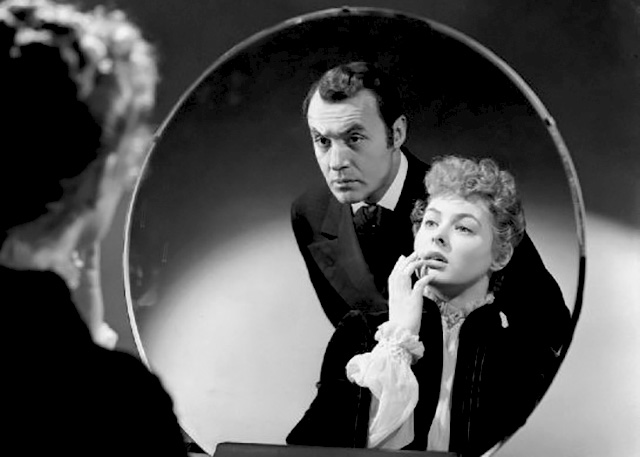 MGM undertook to gaslight audiences by pretending that the 1940 British movie never existed. The studio tried to destroy all prints.  Lansbury was only seventeen when filming began. When she walked on set on her birthday, Bergman and the crew had organized a party for her.  This movie won an Academy Award for set decoration. The gasoliers were real and the one in Charles Boyer's bedroom came from the 1872 Menlo Park, California mansion of Senator Milton Latham, which was torn down in 1942.  In her autobiography, Ingrid Bergman called Charles Boyer the most intelligent actor with whom she ever worked and one of the nicest. "He was widely read and well educated, and so different," she wrote.  The aria that Ingrid Bergman is singing in the first scene of her in the present day is from the Gaetano Donizetti opera "Lucia Di Lammermoor." The opera is famous for its so-called mad scene, in which the eponymous Lucia goes insane.  Irene Dunne and Hedy Lamarr turned down the chance to play Paula Alquist. Industry rumors pegged Greer Garson as Ingrid Bergman's replacement if she had been unable to be loaned out for this movie.
|
|
|
|
Post by topbilled on May 5, 2023 5:32:27 GMT
Such great information in these posts. What a treat to be able to read these...
|
|
|
|
Post by sepiatone on May 5, 2023 15:48:58 GMT
I agree 200%!  Sepiatone |
|
|
|
Post by nipkowdisc on May 6, 2023 2:59:38 GMT
the ansco brand name is on my vintage GAF super 8 movie camera which still works.
|
|
|
|
Post by sepiatone on May 6, 2023 15:15:09 GMT
This style of Ansco camera was the "family camera" when I was a kid. Mom got rid of it when 127 film was no longer being made. But it did take great photos.  Sepiatone |
|
|
|
Post by galacticgirrrl on May 9, 2023 3:00:46 GMT
Well I am back from the 30th annual Hot Docs film festival. I am sorry to say I have not one film to recommend this year. I hope this is just me and not the festival. The upside: I am not suffering the usual withdrawal symptoms after the festival ends. Hurrah? May 8, 1914
Paramount Pictures Corporation was foundedParamount Pictures Corporation (previously known as Progressive Pictures) was founded by Utah theatre owner William Wadsworth Hodkinson (August 16, 1881 – June 2, 1971).  Hodkinson opened one of the first movie theaters in Ogden, Utah in 1907. Two-years later he was able to buy out his competitors as he expanded into Salt Lake City, Utah. Hodkinson then joined General Film Company and became one of the leading West Coast film distributors, expanding into Los Angeles and San Francisco.  Louise Glaum & William Wadsworth Hodkinson - May 1918 Louise Glaum & William Wadsworth Hodkinson - May 1918 On May 8, 1914, Hodkinson merged a number of smaller firms to create the first U.S.-wide distributor of feature films, Paramount Pictures. On May 15, 1914, Hodkinson signed a five-year contract with the Famous Players Film Company, the Lasky Company and Bosworth, Inc. to distribute their films. In addition to gaining a huge efficiency advantage over the previous regional States' Rights and Road Show systems of film distribution, Paramount introduced the concept of block-booking. 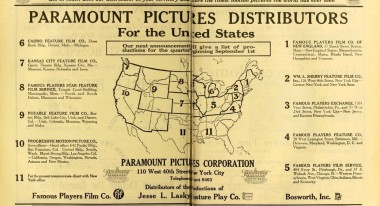 Hodkinson's plan guaranteed exhibitors a steady supply of features because Paramount would help producers finance and advertise their pictures with advance rentals collected by the exchanges. In return, Paramount charged producers a distribution fee of 35 percent of gross to cover operating costs and profit.  Hodkinson, remembered as “the Man Who Invented Hollywood,” allegedly designed the Paramount logo in 1914. Legend has it that he doodled an image of a star-crested mountain with clouds and 27 stars on a napkin. Hidden meanings have been ascribed to the logo ever since. The Lost Paradise (1914)
This was the first Paramount Pictures Corp. release. The Lost Paradise (1914) is a lost silent film.  Although contemporary reviews of the film are difficult to find, an article in the October 1914 Lake Shore News (out of Wilmette, Illinois) notes that “The Lost Paradise is a powerful pictorial argument in behalf of the oppressed laborers, whose lives build the wealth of nations, whose tears are crystallized in the jewels of the rich.” The Invention of Paramount Pictures filmmakermagazine.com/75946-the-invention-of-paramount-pictures/#.ZFki-nbMKM8W. W. Hodkinson: The Man Who Invented Hollywood www.cobbles.com/simpp_archive/hodkinson_system.htmParamount Pictures’ Logo Started as a Desktop Doodle, and Has Endured for 105 Years www.adweek.com/brand-marketing/paramount-pictures-logo-started-as-a-desktop-doodle/ |
|
|
|
Post by sepiatone on May 9, 2023 16:27:03 GMT
Always wondered what mountain was used as a model for that logo. Real, or artist concept.
Sepiatone
|
|
|
|
Post by jamesjazzguitar on May 10, 2023 1:39:02 GMT
Well today something historic and good happened.
|
|
|
|
Post by sepiatone on May 10, 2023 15:52:18 GMT
 Which was.....? Sepiatone |
|
|
|
Post by jamesjazzguitar on May 10, 2023 15:55:31 GMT
 Which was.....? Sepiatone Each person can decide on that by themselves. I don't wish to disclose my view since it is very political, but there were two good things that happened. |
|
|
|
Post by kims on May 10, 2023 17:03:51 GMT
Is one your birthday?  |
|